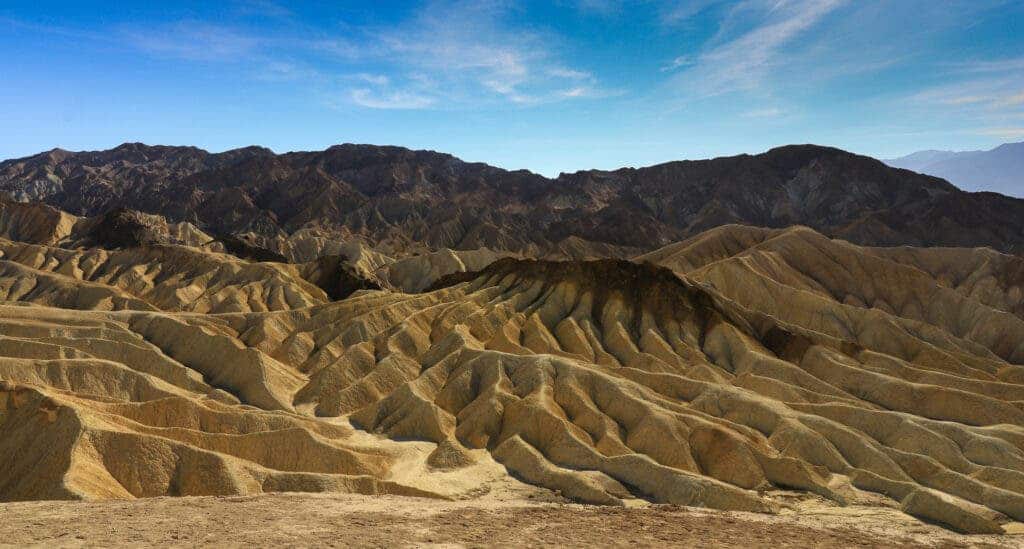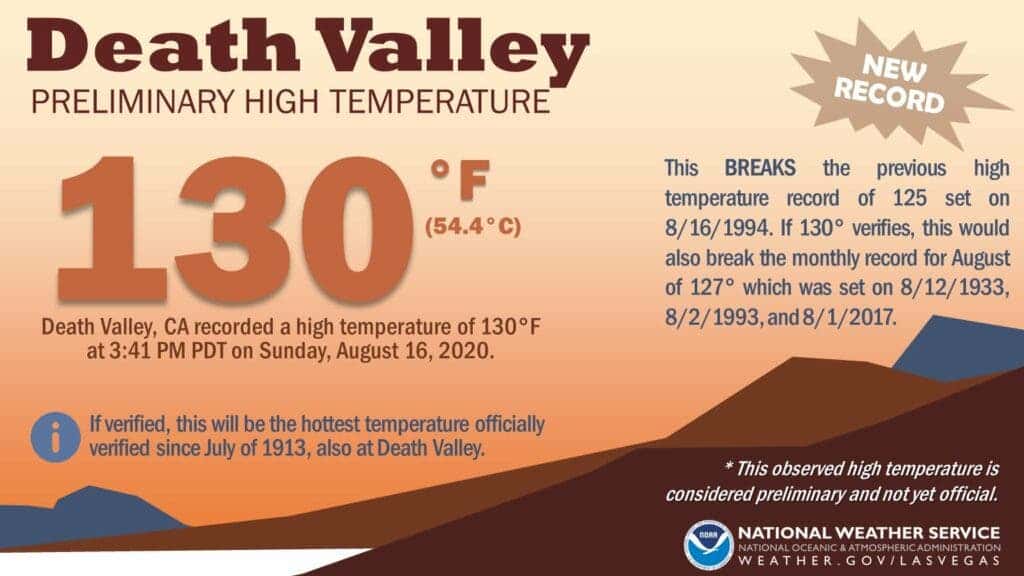As the US west coast is dealing with a heatwave, the temperatures at Death Valley National Park in California reached 130 Fahrenheit (54.4ºC) on Sunday, possibly breaking the record for the highest temperature ever (reliably) recorded on Earth.

The reading, obtained at 3:41 PM, is now being verified by the United States Weather Service, although climate experts are confident it will be confirmed. It would not only be the hottest temperature recorded in the US since 1913, but also break the world’s temperature record.
“Everything I’ve seen so far indicates that is a legitimate observation,” Randy Cerveny, who leads the World Meteorological Organization’s weather and climate extremes team, told The Washington Post. “I am recommending that the World Meteorological Organization preliminarily accept the observation.”
The current record for the hottest temperature on Earth is also held by Death Valley, at 134 Fahrenheit (56.6ºC), recorded on July 10, 1913. But the measurement is disputed and considered erroneous by modern weather experts.
Christopher Burt, an expert on extreme weather data, concluded in a study in 2016 that it was “essentially not possible from a meteorological perspective” as the Death Valley reading doesn’t agree with the temperatures in the region as a whole.

A record-high temperature for Africa was registered in Tunisia at 131 Fahrenheit (55ºC) but, according to Burt, that reading, as well as others in Africa from the colonial period, have “serious credibility issues.”
That’s why experts claim that the hottest temperature ever “reliably” registered on Earth was experienced in 2013 at Death Valley, with a temperature of 129.2 Fahrenheit (54ºC). That is, until now, as the recent reading could mark a new record for the planet.
Death Valley is the hottest, driest, and lowest location in the US. The temperature was measured at Furnace Creek, which is 190 feet below sea level in the Mojave Desert in California. It’s well-known for its high temperatures, especially in July. In 2018, during that month, temperatures reached 120 Fahrenheit (48.8ºC) on 21 different days.
WMO will verify the temperature of 130°F (54.4C) reported at Death Valley, California, on Sunday. This would be the hottest global temperature officially recorded since 1931. pic.twitter.com/AOaWHKWVKJ
— World Meteorological Organization (@WMO) August 17, 2020
Soaring heat
The temperature was recorded during a heatwave that stretches from Arizona in the south-west up the coast to Washington State in the north-west. It should peak on Tuesday before temperatures start dropping later in the week. Nevertheless, the heat will continue for at least 10 more days.
Oakland, California, broke a local record on Friday by reaching 100 Fahrenheit (37.7ºC) for the first time, while Phoenix had its highest temperature for the month at 117 Fahrenheit (47.2ºC). Then on Saturday, Needles, California had its highest temperature on record for August at 123 Fahrenheit (50.5ºC).
The heatwave led to the growing use of electricity for air conditioning, causing problems with the power grid. California’s Independent System Operator (CISO), which controls the state’s power, declared a Stage 3 Emergency, meaning that “demand [for electricity] begins to outpace supply.”
Climate scientists agree that the duration, frequency, and intensity of heatwaves worldwide is increasing due to human-caused climate change. Daily record temperatures over the past decade have set twice as often as record lows across the continental United States, with heat waves becoming more frequent especially in the West.






